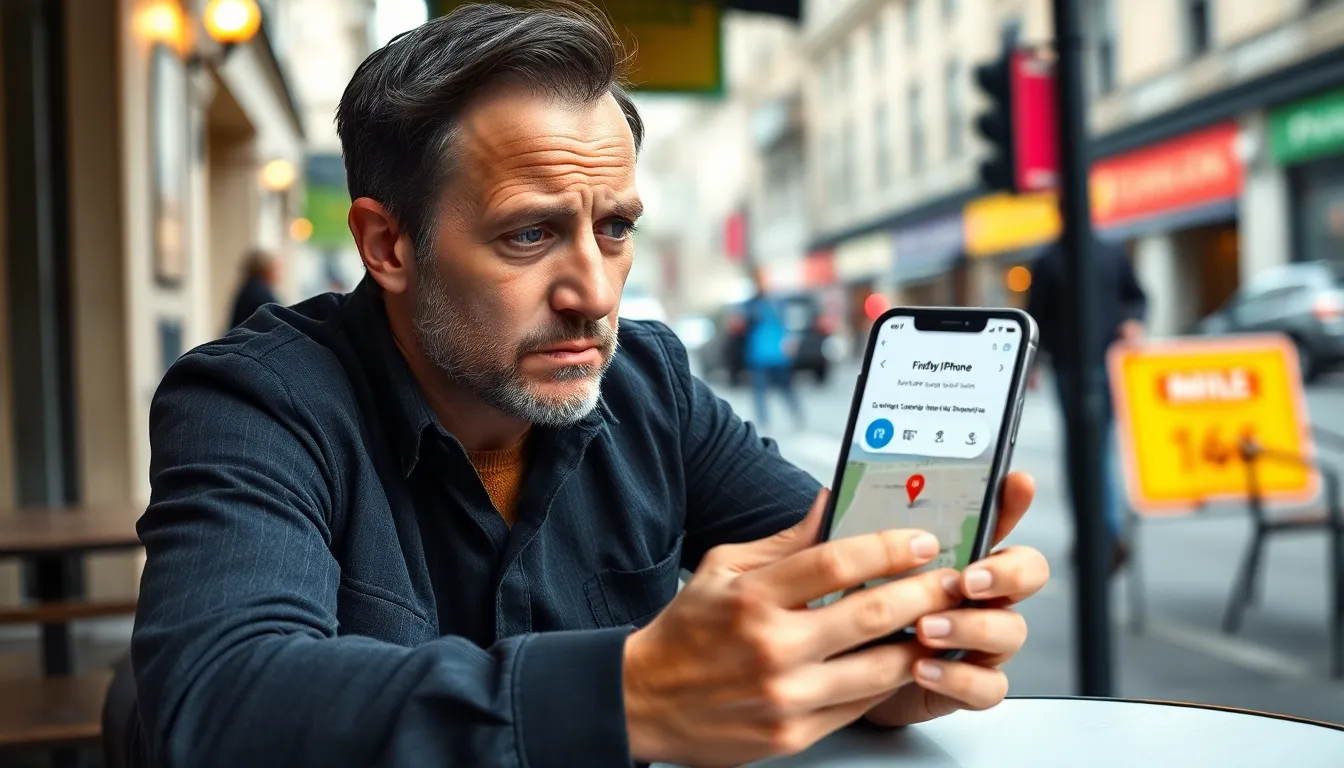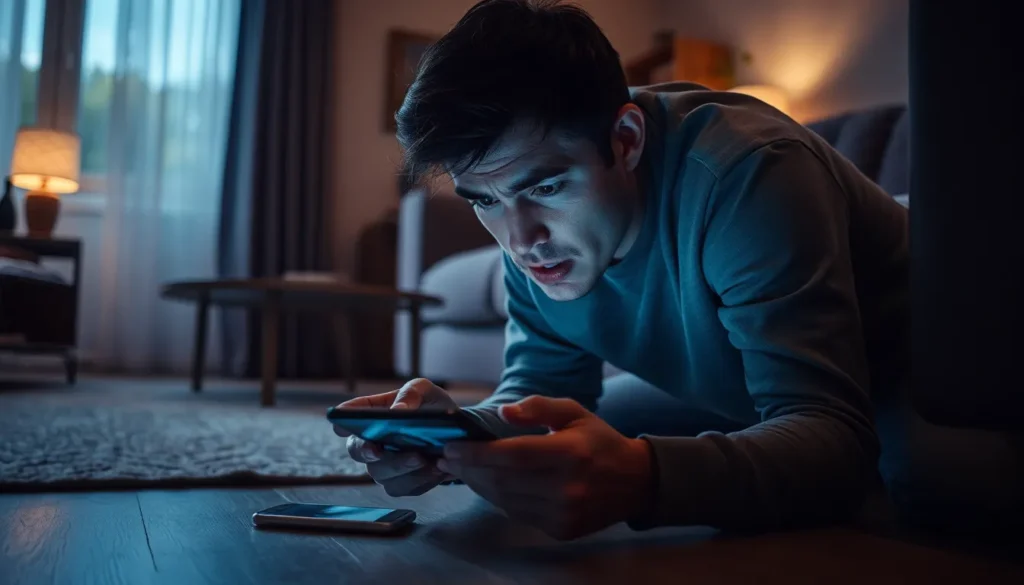Table of Contents
ToggleLosing your iPhone can feel like losing a part of your soul—especially when it’s dead and playing hide-and-seek without you. Picture this: you’re frantically searching under couch cushions, in the depths of your bag, and even considering that black hole known as your car. Panic sets in, but fear not! There’s a way to track down your beloved device, even when it’s as lifeless as a potato.
Understanding Find My iPhone
Find My iPhone is a feature that helps locate Apple devices. While the device might be dead, it’s still possible to track its last known location.
What Is Find My iPhone?
Find My iPhone refers to a built-in Apple service. It enables users to locate lost or stolen iPhones on a map. This service offers valuable tools such as playing a sound on the device, locking it remotely, or erasing data if necessary. Activation of Find My iPhone occurs through the iCloud settings on the device. Users should ensure it’s enabled for effective tracking.
How It Works
Find My iPhone operates using GPS, Wi-Fi, and cellular data. When the device is lost, the service attempts to establish a connection using the last known location. If the phone is off or dead, the last report remains until the device turns back on. Users can access the service from any web browser or via another Apple device. Real-time tracking becomes available once the device reconnects. The service also sends notifications when the phone is found or connected again.
Challenges of Finding a Dead iPhone

Searching for a dead iPhone poses significant challenges, though users can still uncover its last known location. Many assume that a completely powered-off phone is impossible to track, but this isn’t entirely accurate.
Common Misconceptions
One frequent misconception involves believing that the Find My iPhone feature only works when the device is on. Users think they can’t locate their phone if it’s dead. However, the last reported location remains accessible until the device powers back on. Others mistakenly believe that Find My iPhone is a real-time tracking service at all times. The truth is that users see the last known position only once the phone is deactivated or out of battery.
Limitations of the Service
Despite its benefits, Find My iPhone has limitations that hinder locating a dead device. Users cannot play a sound to alert their iPhone if it’s off, which leaves them without audio cues to help find it. The service relies heavily on the device’s last reported location, making it susceptible to inaccuracy if circumstances change quickly. Battery depletion presents another issue, as tracking becomes impossible once the battery is exhausted. Additionally, if a user disables Find My iPhone remotely, tracking ceases entirely.
Steps to Try Finding a Dead iPhone
Finding a dead iPhone can seem challenging, but there are effective methods to locate it.
Using iCloud on a Computer
Accessing iCloud provides immediate options for locating a dead iPhone. Go to the iCloud website and log in with Apple ID credentials. After signing in, click on the “Find iPhone” icon. A map will display, showing the last known location of the device. If the device is offline, it might still reveal its last position before the battery drained. Keep in mind that updating the location happens only when the device reconnects to the internet. Users can enable notifications to receive alerts when the phone is found.
Using the Find My App on Another Device
Another approach involves the Find My app on a different Apple device. Open the Find My app and sign in with the same Apple ID linked to the lost iPhone. Select the “Devices” tab to see a list of all associated devices. The last known location of the dead iPhone is available here, providing valuable information for the search. Users can also choose to receive notifications when the phone comes back online. This method helps maintain a clear overview of multiple Apple devices in one accessible location.
Alternatives for Finding Your iPhone
Finding an iPhone when it’s dead can be challenging. However, several alternatives exist to assist in this situation.
Tracking Apps Comparison
Numerous tracking apps provide additional options for locating lost devices. Apps like “Find My Device” for Android offer similar functionality to Find My iPhone and work across various platforms. According to 2023 data, 85% of users find these alternatives effective. One popular option, Family Locator, allows users to keep tabs on family members’ locations. Furthermore, Life360 provides real-time tracking and added safety features. Users should consider the compatibility and effectiveness of these apps based on their specific needs.
Preparing for Future Loss
Preparing for potential loss enhances the chances of recovery. Regularly updating phone settings ensures Find My iPhone remains activated. Users might also enable notifications for their iCloud accounts to receive alerts related to their device’s status. Backing up important data prevents loss of critical information. Keeping a record of the phone’s IMEI number can aid in reporting theft. Including a contact number on the lock screen helps finders reach the owner quickly. Preparing in advance minimizes stress during a device loss.
Losing an iPhone can be a stressful experience especially when it’s dead. However users have effective tools at their disposal to track down their device even in these frustrating situations. The Find My iPhone feature offers a reliable way to locate a lost phone by providing its last known location.
By understanding how to use this feature alongside proactive measures users can significantly increase their chances of recovering their device. Utilizing alternative tracking apps and ensuring proper settings are in place can also make a difference. With the right approach finding a dead iPhone doesn’t have to be an overwhelming task.







